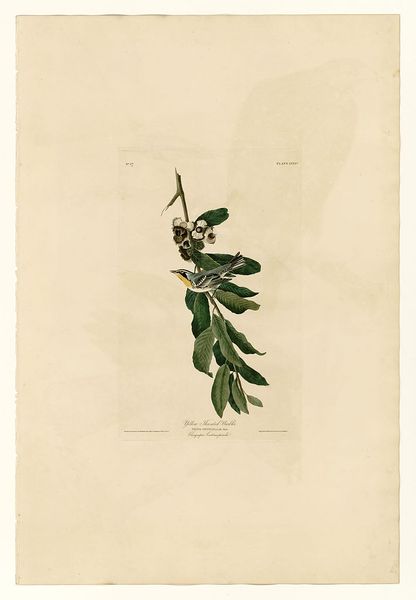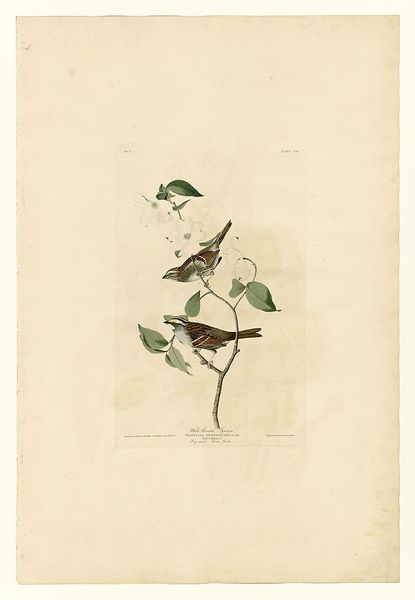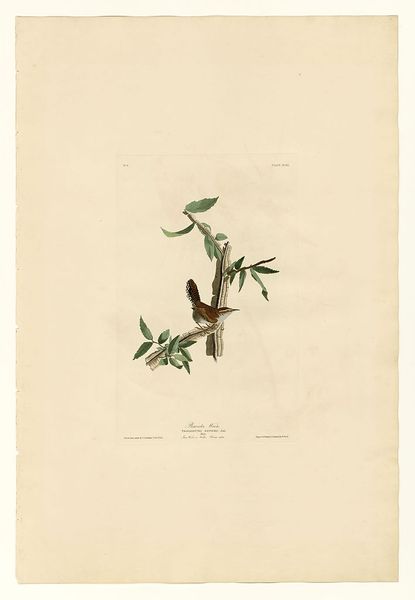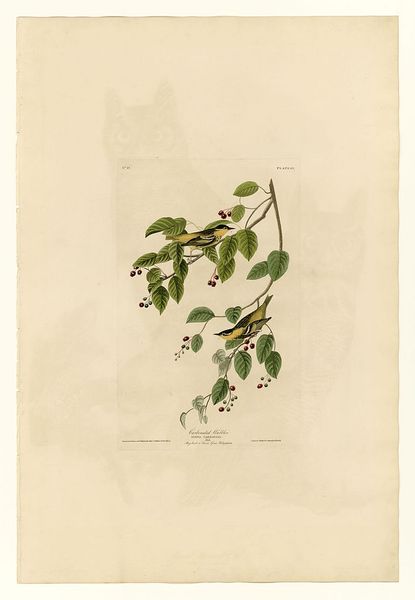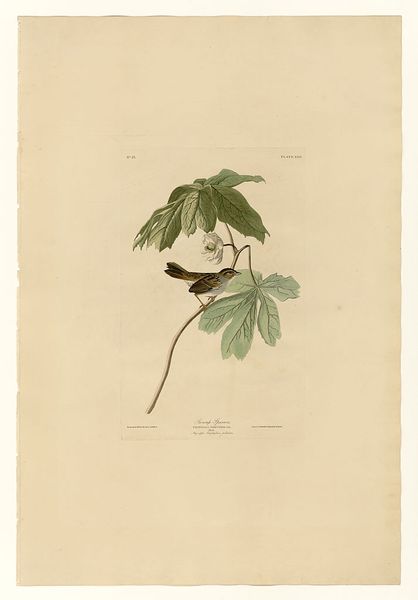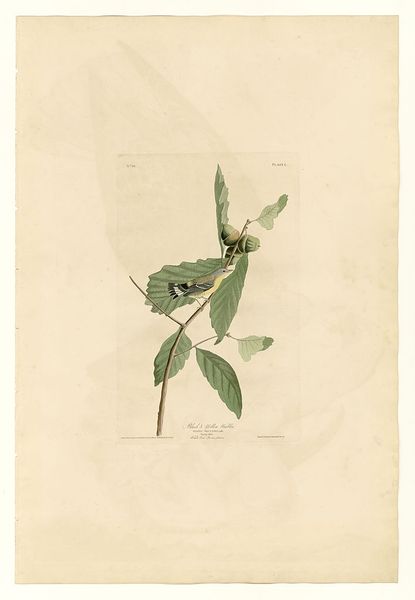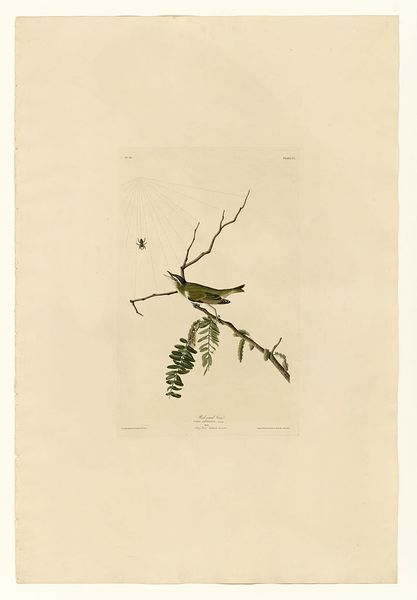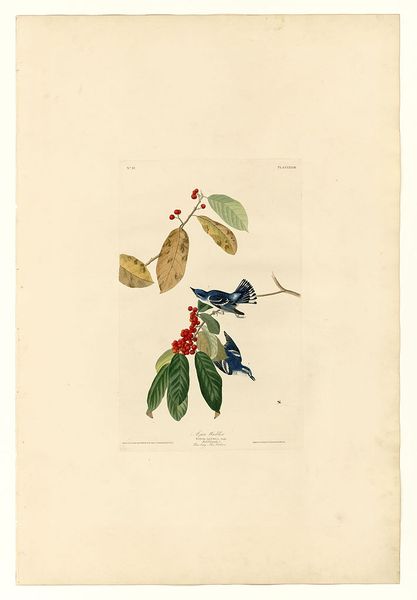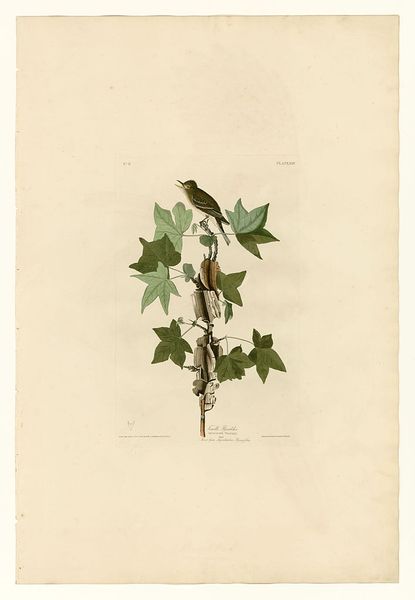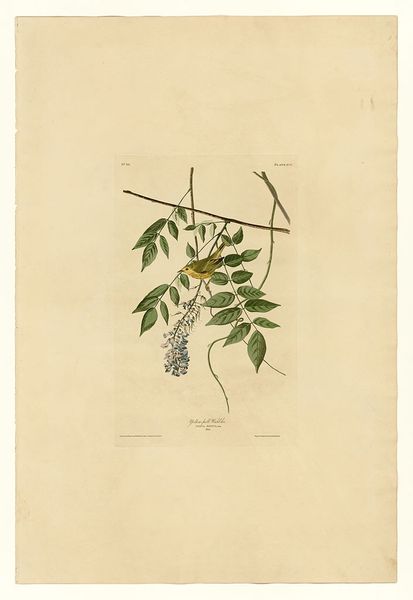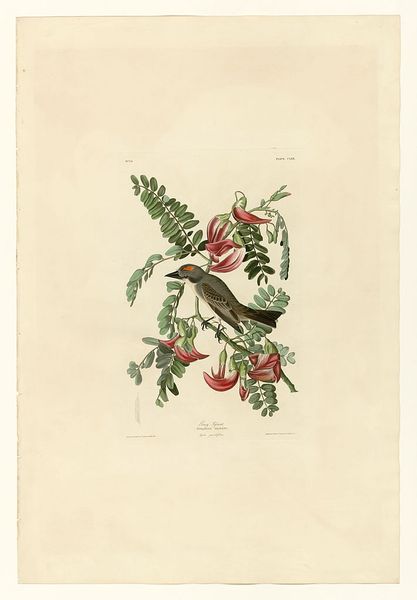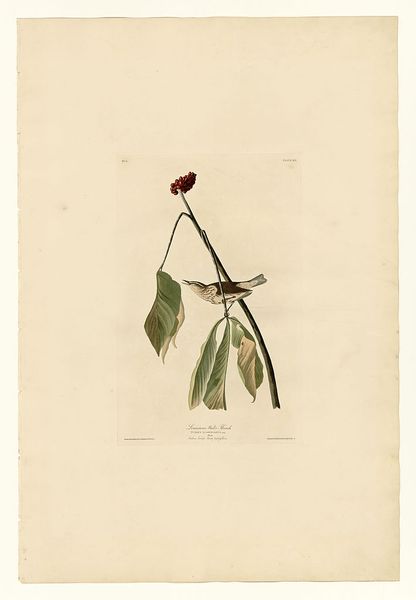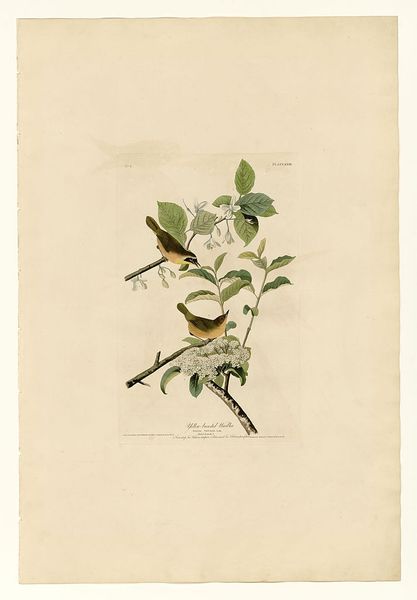
drawing, plein-air, watercolor
#
drawing
#
plein-air
#
old engraving style
#
watercolor
#
plant
#
watercolour illustration
#
botany
#
naturalism
#
botanical art
Copyright: Public domain
John James Audubon created “Plate 24. Roscoe’s Yellow-throat” using watercolor, pastel, and graphite during a period of intense scientific exploration and colonial expansion in the Americas. Audubon sought to document all the birds of North America, reflecting the 19th-century’s fascination with natural history. Yet, this pursuit was deeply entwined with the era's racial politics. Audubon, who was of mixed race, both benefited from and contributed to the displacement of indigenous peoples and the exploitation of enslaved people, whose labor indirectly supported his expeditions. "I feel pleasure to tell you," Audubon wrote, capturing the racial insensitivity of the time, "that I have drawn nine birds... since I arrived here." Observe the precision with which Audubon captures the bird's form and plumage. Consider how this act of documentation also participates in a larger project of claiming and controlling the natural world. The beauty of the image invites us to reflect on the complex relationship between art, science, and the legacies of colonialism.
Comments
No comments
Be the first to comment and join the conversation on the ultimate creative platform.
